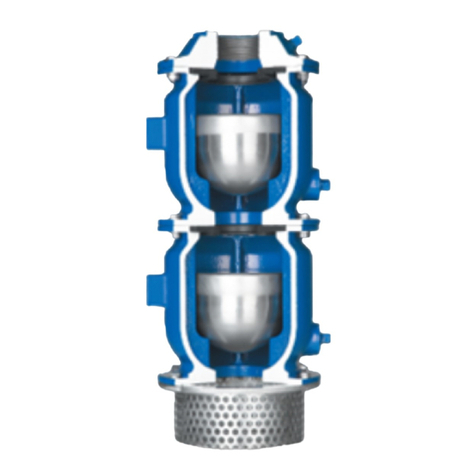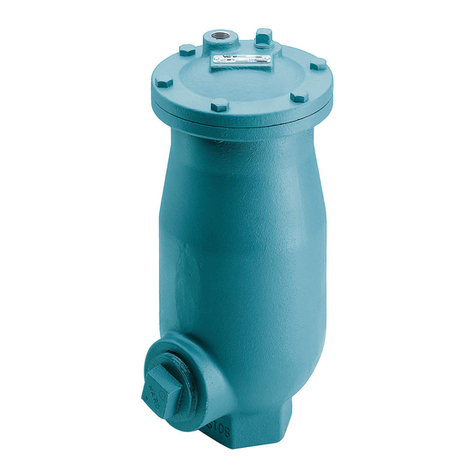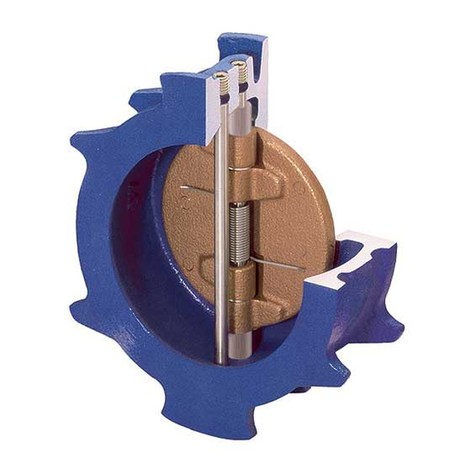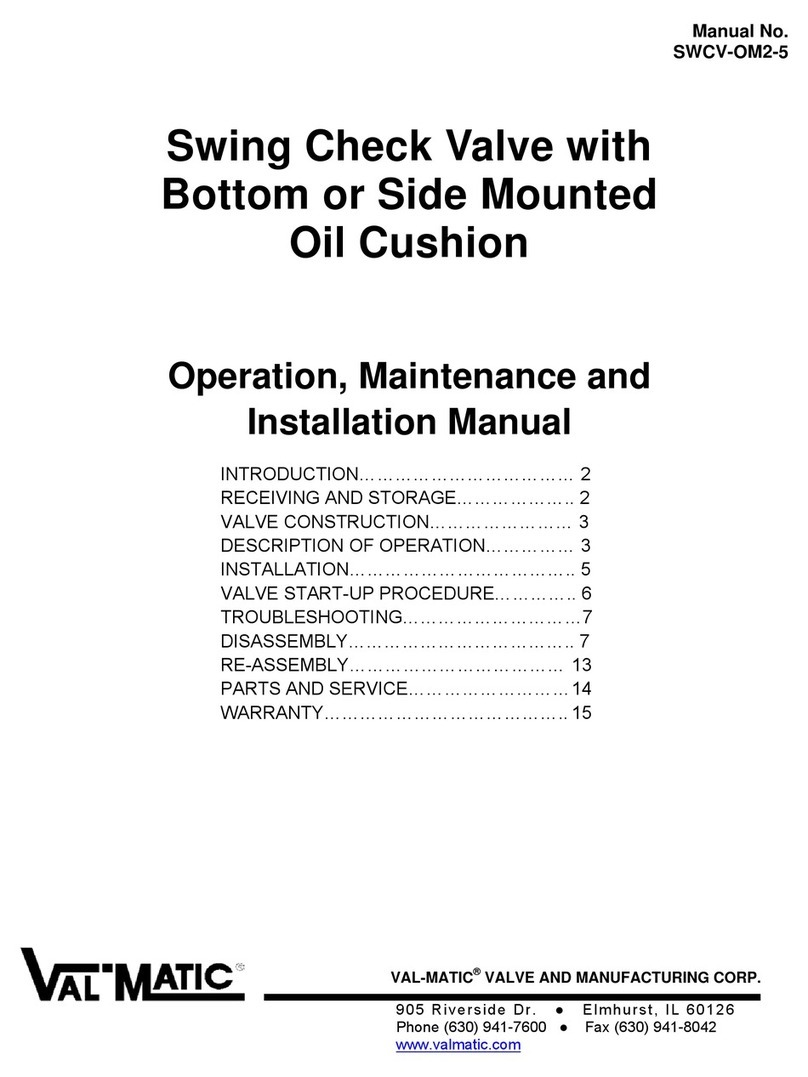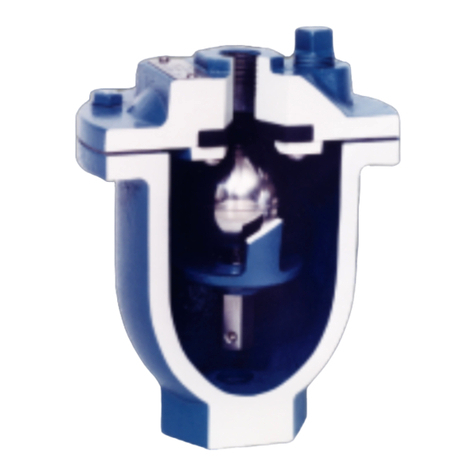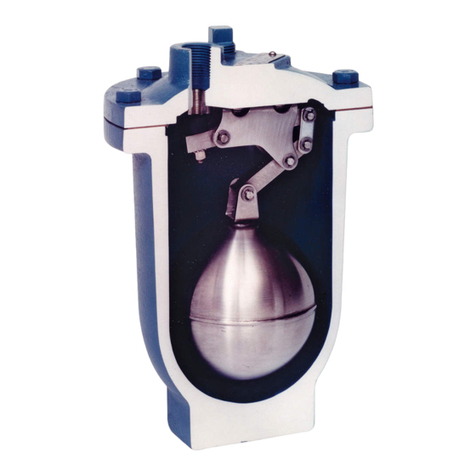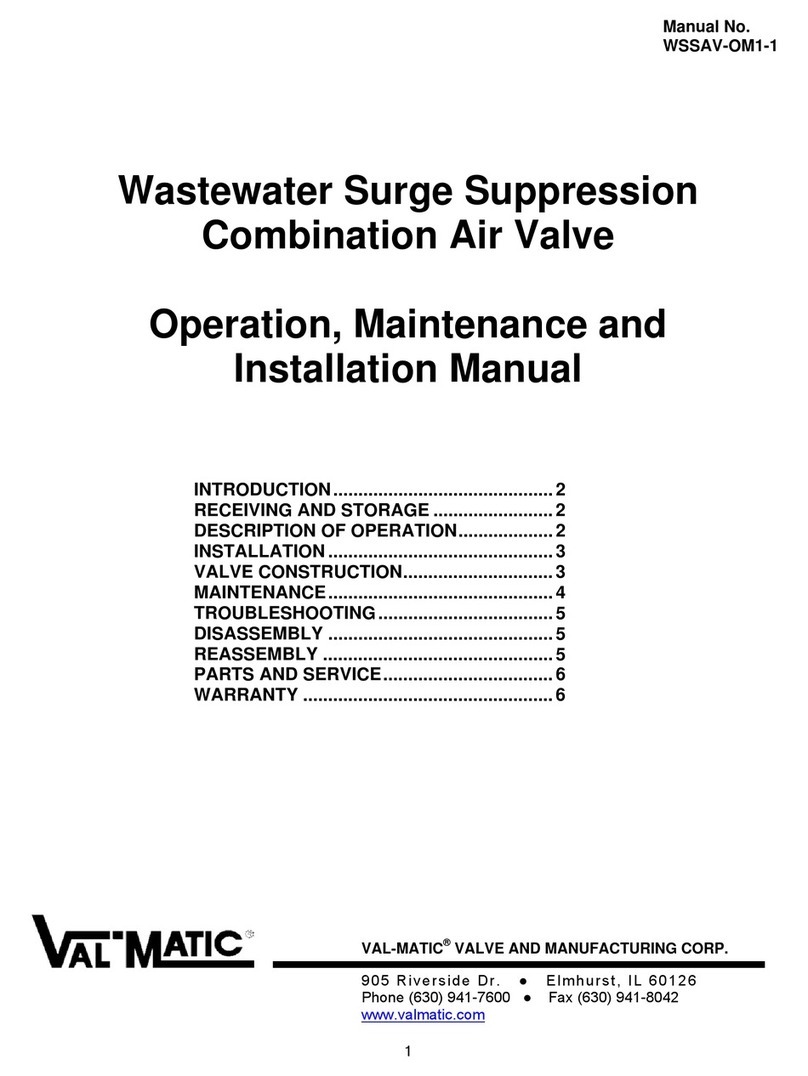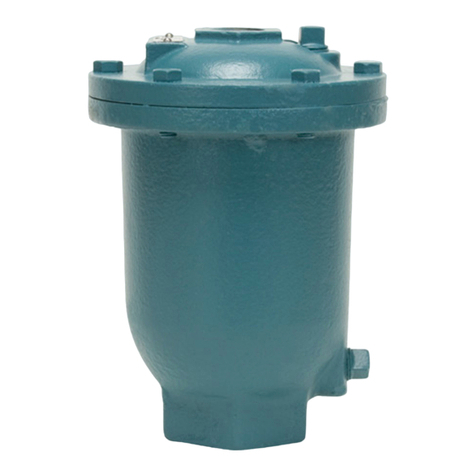
3
Block and Bleed
The standard configuration of the QuadroSphere
trunnion ball valve is a double block and bleed
(DBB) design. The seats are floating and are
activated by internal springs and line pressure to
seal against the QuadroSphere ball. The seats work
independently and if pressure in the body cavity
exceeds the upstream or downstream pressure, the
cavity pressure will relieve itself to the side of lower
pressure.
This single piston effect allows for verification of the
effectiveness of the seats while the valve is installed.
Use caution when purging, venting or draining the
valve’s center cavity. With the valve closed and the
upstream and/or downstream end pressurized,
carefully open the vent valve or drain valve on the
center cavity. Continue venting until the center
cavity reaches atmospheric pressure. Once the
center cavity reaches atmospheric pressure, the
seat integrity may be determined by observing for
additional leakage through the open vent. If no
additional leakage appears through the vent, the
seats are sealing affectively.
QuadroSphere ball valves provided with a Double
Isolation and Bleed (DIB) configuration will not
automatically relieve center cavity pressure. These
valves are provided with an automatic cavity
pressure relieve device. Caution should be taken to
ensure the pressure relief device is functioning
properly and there is no excess pressure in the
center cavity.
MAINTENANCE
Once the QuadroSphere valve has been put into
service, the valve shall be checked and maintained
periodically. Routine inspections should look for
worn sealing surfaces, aging of packing rings and
“O” rings, and corrosion of the body. If these
conditions are observed, the valve shall be repaired
or replaced. It is suggested that inspection and
maintenance of the valve be performed every three
months for installations where the fluid is water or
oil. Inspections should be performed at least every
month where the fluid is a strong corrosive.
Prior to performing any maintenance on the
QuadroSphere ball valve, ensure all pressure is
relieved from the valve, including the center cavity.
When performing repair or maintenance operations,
do not attempt to remove the gear/lever, remove or
attempt to replace bolts and nuts when the valve is
under pressure. Replacement O-rings, gaskets,
bolts and nuts should be of the same sizes and
materials as the original ones. Valve O-rings and
gaskets should be ordered as spare parts for
maintenance and replacement. After the
replacement of any O-ring, gasket, bolt and nut, the
valve shall be closure tested prior to reuse.
No weld repair of any valve component should be
performed on an installed valve. Repairing of any
pressure containing part by the user is not
recommended. If pressure containing parts become
worn due to extended service or harsh service, the
valve should be replaced.
Lubrication
QuadroSphere ball valves do not require stem or
seat lubrication for standard operation. An
emergency sealant injection system is provided on all 6
NPS and larger QuadroSphere Ball Valves with single
piston (DBB) design. Sealant injection should only be
utilized
in
emergency situations where seat insert(s)
have been damaged by foreign matter or high
temperatures.
Seat Injection: For best results, sealant
injection should only be performed with the valve
in the full open or full closed position.
Stem Injection: Stem seals are permanent and
sealant should only be injected for temporary or
emergency sealing.
Lubrication of Seat Rings: In certain applications it
may be advantageous
to
periodically lubricate
behind the seat rings to prevent the ingress of
foreign particles and/or build-up of scale, etc.
General purpose grease should be used, such as
Mystic JT-6, or equal. Heavier greases should
not
be used.
TROUBLESHOOTING
Table 1 lists several maintenance techniques for
common operating issues with ball valves. Table 1
is not meant to be an exhaustive list of all problems
that can occur with a ball valve. Rather, it presents
a starting point for the user to consider when
performing maintenance.
